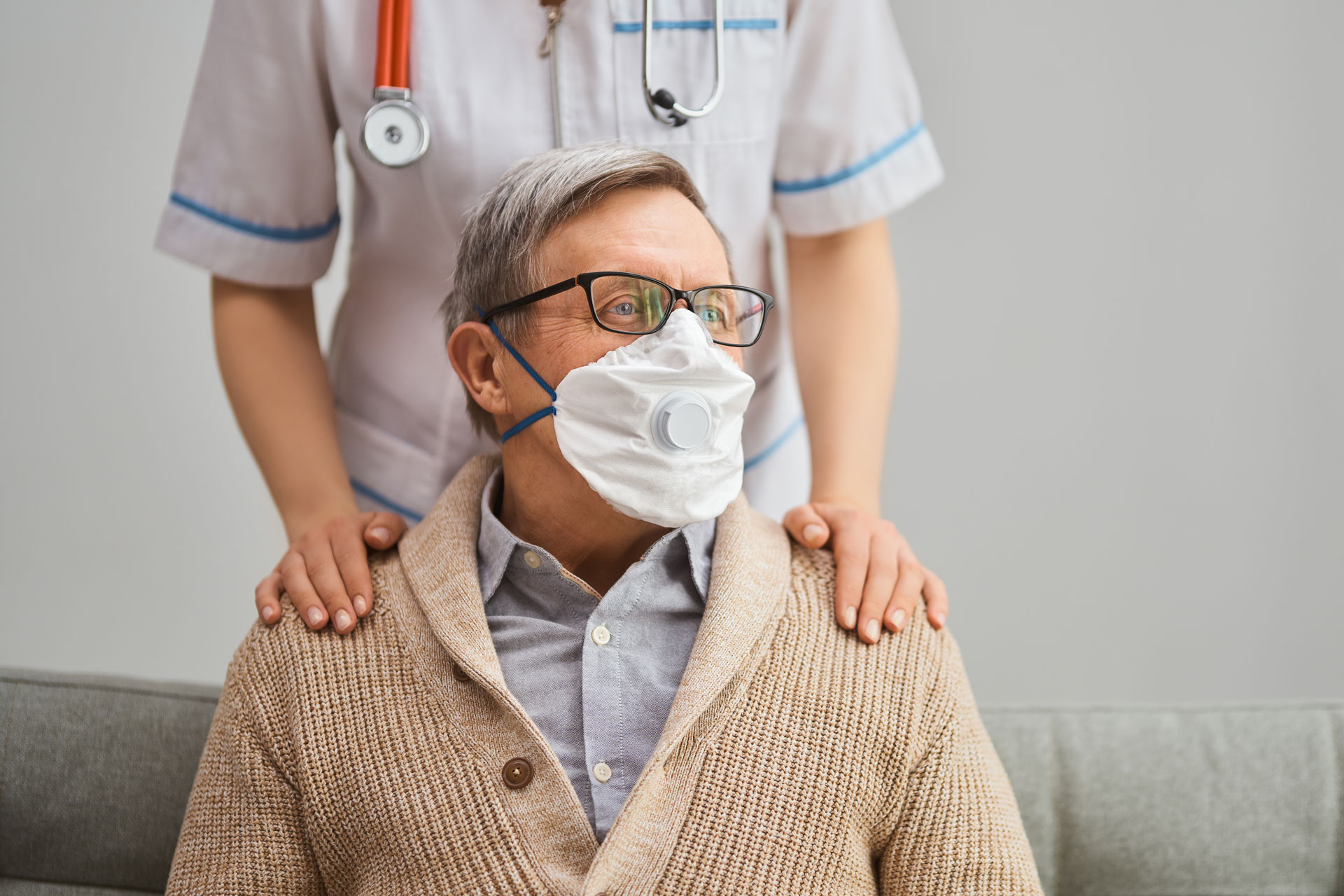Guidelines for laundry in health care facilities

It is critical to correctly launder garments in health care facilities, if you are to help stop the spread of the coronavirus and other bacteria to your employees and patients.
Not surprisingly, nursing homes, assisted living facilities and other health care centers wash lots of laundry, everything from bed sheets and blankets, to towels, personal clothing and more. In fact, an estimated 5 billion pounds of items are laundered in health care settings annually. Even before the coronavirus became a worldwide pandemic, health care facilities dealt with contaminated fabrics that were soiled with blood, stool, urine, vomit and other dangerous contaminants. When handled inappropriately and not washed properly, bacteria, viruses and ectoparasites, or organisms such as ticks, fleas, lice and mites that attach or burrow into the skin and remain there for periods of time, can spread from these contaminated textiles, causing serious complications for patients and caregivers.
To combat these dangers, follow these Centers for Disease Control and Prevention guidelines:
Minimize the spread of bacteria during transport.
Minimize handling the laundry, avoiding agitation to prevent spreading bacteria across additional surfaces or through the air. Do not rinse or sort soiled laundry at the location where it was used, such as the patient’s room or in a surgical area. Instead:
- Place the laundry into bags or other appropriate containers in the original location and secure the bags or containers. Leak-resistant containers may be necessary if the laundry is wet and could soak through a cloth bag.
- Use labels or color coding to clearly mark contaminated bags and thus allow others in the facility to handle these items safely. Use red bags or bags marked with the biohazard symbol, if the facility does not use universal precautions for all laundry.
- Don’t squeeze or hold the bags near the body during transport to avoid puncturing.
- Once properly secured and labeled, transport to the on-premises laundry area for proper handling.
Have hand washing stations readily available.
All employees working in nursing homes, long-term care facilities and other health care operations should have access to proper hand washing stations, particularly if they’re handling soiled linens. Employees should also avoid touching their eyes, nose and mouth with unwashed hands.
Studies show that washing hands regularly can reduce the spread of illness and infection. The CDC recommends people wash their hands often with soap and water for at least 20 seconds, and if soap and water are not readily available, people should use a hand sanitizer that contains at least 60 percent alcohol, making sure to cover all surfaces of their hands and rubbing them together until they feel dry.
In fact even before the spread of the coronavirus, researchers in London estimated that if everyone routinely washed their hands, 1 million deaths a year could be prevented, according to the CDC.
Wear appropriate PPE when handling soiled fabrics.
Laundry workers should wear appropriate personal protective equipment or PPE, such as medical gloves and masks, when handling and sorting soiled fabrics. Gloves used for sorting laundry should be thick enough to minimize potential injury from needles and other sharp items accidentally mixed in with the laundry. Learn more about PPEs in the Bloodborne Pathogens Standard 29 CFR 1910.1030(d)(4)(iv)(B).
In addition, the CDC is now recommending the use of simple cloth face coverings to slow the spread of the coronavirus and help people who may have the virus and do not know it from transmitting it to others. These cloth face coverings should be used wherever social distancing measures are difficult to maintain, and should be machine washed routinely, depending on frequency of use.
Cloth face coverings should—
- fit snugly but comfortably against the side of the face
- be secured with ties or ear loops
- include multiple layers of fabric
- allow for breathing without restriction
- be able to be laundered and machine dried without damage or change to shape
Minimize contamination by partitioning your nursing home’s on-premises laundry room.
To avoid contaminating laundry, it’s recommended to have two separate areas for laundry at your long-term care facility – a dirty area for soiled linens and a separate clean area for handling washed items. For those facilities considering updating or renovating their laundry areas, UniMac offers resources for architects for designing a functional and safe on-premise laundry room for senior care facilities.
Keep laundry equipment clean and well-maintained.
All washing machines and dryers in health care settings should be properly maintained according to the manufacturer’s instructions. To prevent microbial contamination of your commercial laundry equipment:
- Remove solids such as feces or vomit before the wash/dry cycle.
- Follow the recommended temperature, detergent and laundry additive guidelines.
- Don’t leave damp textiles in machines overnight.
- Provide proper washing instructions for scrubs/uniforms or wash on site.
While OSHA regulations prohibit home laundering of personal protective apparel or equipment, such as a lab coat or gloves, experts are divided about whether this extends to scrubs, uniforms and other clothing worn by doctors, nurses and medical professionals during the workday.
If uniforms are required, the health care facility should make provisions to launder them properly on-site or provide the necessary information to employees regarding risks, infection control and proper cleaning guidelines for the item based on duties being performed at the facility. Research shows that sleeves and pockets tend to contain the most harmful bacteria on garments, even when not visibly contaminated.
Use hot water while doing laundry to minimize bacteria.
A temperature of at least 160°F (71°C) for a minimum of 25 minutes is commonly recommended for hot-water washing in health care facilities and nursing homes, according to the CDC. In addition, the use of chlorine bleach assures an extra margin of safety. Chlorine bleach becomes activated at water temperatures of 135°F–145°F (57.2°C–62.7°C).
Not surprisingly, laundries are typically the largest users of hot water in hospitals and can consume 50 percent to 75 percent of the total hot water, representing an average of 10 percent to 15 percent of the energy used by a hospital. Thus, for facilities looking to reduce costs and energy use, cutting back on hot water is an option. Research has shown that lower water temperatures (71°F–77°F) can reduce microbial contamination as well, as long as the washer cycles, detergent and other laundry additives are monitored carefully.
Label chemicals and soaps to prevent injury.
Soaps, detergents and chemicals can cause skin irritation, chemical burns and more, so it’s important nursing homes and other health care facilities properly label chemicals used in laundry rooms. Facilities should implement a written program that meets the requirements of the Hazard Communication Standard from OSHA. Properly store soaps and chemicals and clean up spills quickly when they occur.
